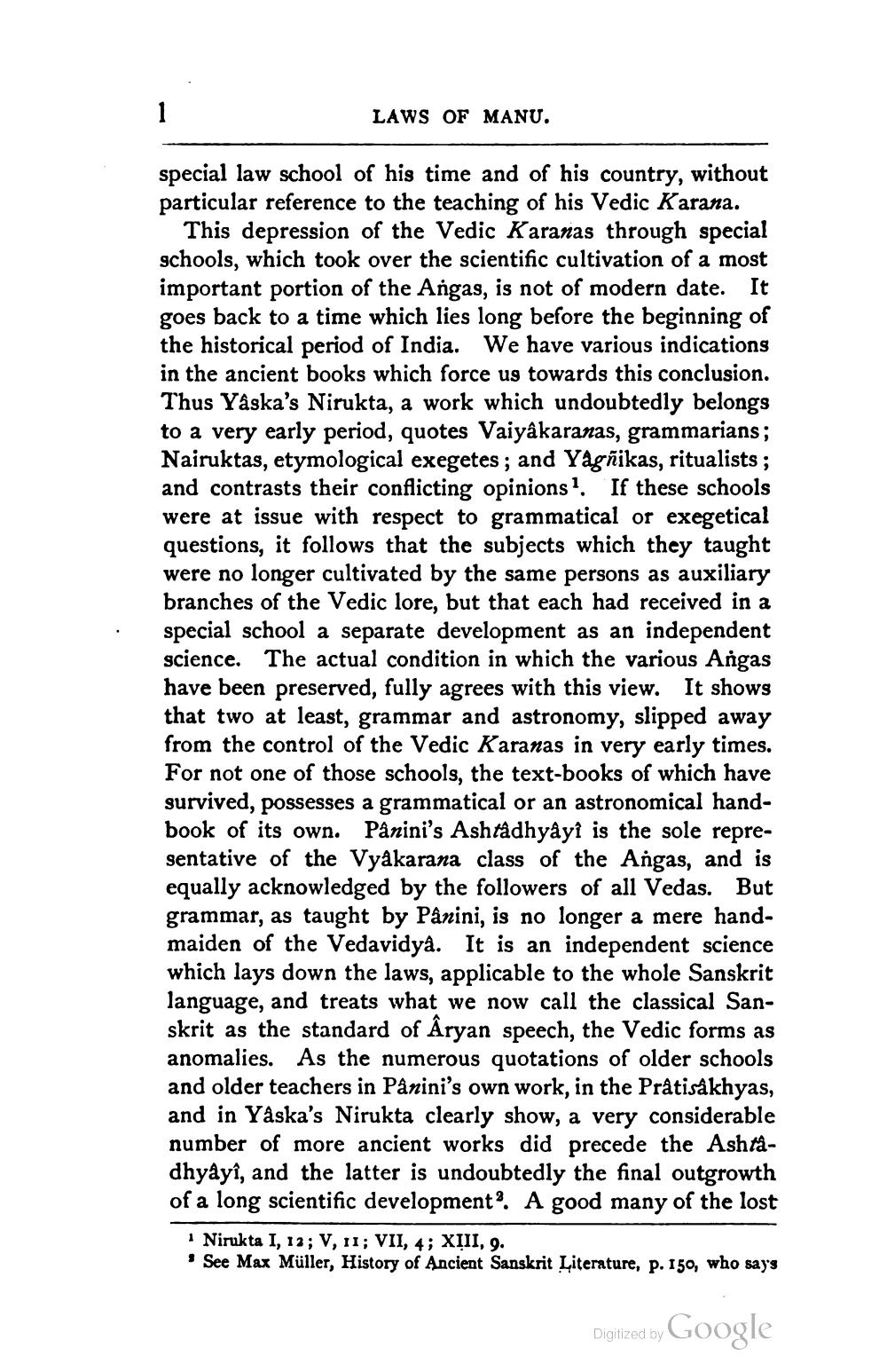________________
LAWS OF MANU.
special law school of his time and of his country, without particular reference to the teaching of his Vedic Karana.
This depression of the Vedic Karanas through special schools, which took over the scientific cultivation of a most important portion of the Angas, is not of modern date. It goes back to a time which lies long before the beginning of the historical period of India. We have various indications in the ancient books which force us towards this conclusion. Thus Yaska's Nirukta, a work which undoubtedly belongs to a very early period, quotes Vaiyâkaranas, grammarians; Nairuktas, etymological exegetes; and Yagnikas, ritualists; and contrasts their conflicting opinions. If these schools were at issue with respect to grammatical or exegetical questions, it follows that the subjects which they taught were no longer cultivated by the same persons as auxiliary branches of the Vedic lore, but that each had received in a special school a separate development as an indep science. The actual condition in which the various Argas have been preserved, fully agrees with this view. It shows that two at least, grammar and astronomy, slipped away from the control of the Vedic Karanas in very early times. For not one of those schools, the text-books of which have survived, possesses a grammatical or an astronomical handbook of its own. Pånini's Ashtådhyâyî is the sole representative of the Vyakarana class of the Angas, and is equally acknowledged by the followers of all Vedas. But grammar, as taught by Pånini, is no longer a mere handmaiden of the Vedavidya. It is an independent science which lays down the laws, applicable to the whole Sanskrit language, and treats what we now call the classical Sanskrit as the standard of Aryan speech, the Vedic forms as anomalies. As the numerous quotations of older schools and older teachers in Panini's own work, in the Prátisakhyas, and in Yaska's Nirukta clearly show, a very considerable number of more ancient works did precede the Ashtàdhyayî, and the latter is undoubtedly the final outgrowth of a long scientific developments. A good many of the lost
· Nirukta I, 12; V, 11; VII, 4; XIII, 9. • See Max Müller, History of Ancient Sanskrit Literature, p. 150, who says
Digitized by Google




